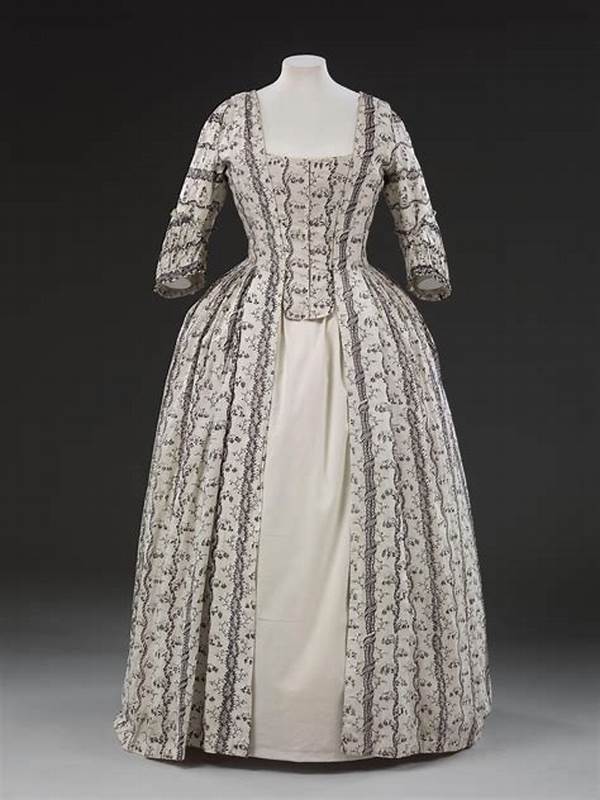“historical Fashion Support Garments”

In a realm where threads weave tales of bygone eras, historical fashion support garments stand as silent whispers of yesteryears. Imagine corsets cinching waists, hoop skirts swirling grandly, and petticoats rustling with each delicate step. These garments are more than mere fabric; they’re the unsung heroes silently shaping the silhouettes of history, playing their vital roles backstage while the world waltzed on, century after century.
The Backbone of Elegance
Historical fashion support garments aren’t just your average underpinnings. These babies were the backbone of style—literally, sometimes! Picture them as the unsung heroes of the fashion world, holding everything up while ensuring our ancestors strutted their stuff with grace and poise. Can you imagine a Victorian lady without her trusty corset or a swinging ’50s skirt without a crinoline? These garments were the unsung MVPs of their time, offering structure and shaping that sometimes had the wearer feeling like a queen, even when they couldn’t breathe too deeply. And let’s not forget the added bonus of being the original waist trainers!
Unraveling the Threads
1. Corsets – Ah, the corset, the OG waist snatcher. Talk about dedication! Historical fashion support garments don’t play around when it comes to cinched perfection.
2. Hoop Skirts – Transforming any gal into a walking, talking bell. Historical fashion support garments nailed the dramatic flair here.
3. Bustles – Backside boost, anyone? These garments knew how to make a comeback look grand.
4. Crinolines – Swish, swoosh, sway… these layers were all about the volume and drama.
5. Petticoats – Every twirl was a statement. Layering perfection for those frothy skirts.
Underneath the Layers
Let’s dive deep into the magic realm of historical fashion support garments, where the mystery of the unspoken exists. Picture the Victorian era with its intricate corsets, masterpieces of engineering that would rival any modern-day skyscraper. Designed with steel bones and endless patience, these garments whispered the secrets of the wearer’s body, molding them with a silent resilience. Meanwhile, crinolines added a touch of rebellion. Those steel-frame cages did more than just hold up skirts—they held up societal standards! With each layer, with each hook and eye, these historical fashion support garments crocheted tales of elegance and restriction, often skewing toward the latter.
Though style has morphed dramatically over the centuries, these fashion relics remind us of an era where support garments were more than just foundation wear. They were the quiet curators of modesty and grandeur. And even if we’ve traded corsets for Spanx and crinolines for barely-there slips, the art and drama of historical fashion support garments still resonate—a nod to a time where clothes were more than just clothing.
Slayin’ the Game
1. Corsets were the ultimate shapers back in the day. They did more sculpting than your favorite influencer’s fitness routine. Historical fashion support garments knew how to snatch!
2. Bustles? Those bad boys gave you that BBL look before it was even a thing.
3. Crinolines added the drama. You weren’t just walking; you were making an entrance.
4. Petticoats? A girl’s best friend for twirlin’ and swirlin’.
5. Who wouldn’t want to add a little hoop and holler to their get-up? Historical fashion support garments knew how to bring the party!
The Modern Echoes
Even though we’ve moved away from some of the more restrictive garments of history, elements of those bygone styles have echoed into today’s fashion world. Ever notice how shapewear bears a striking resemblance to corsets of yore? Modern designers often nod to historical fashion support garments, taking cues from their structuring prowess. Spanx may be the 21st century’s equivalent of the corset, but without the fainting spells. And those voluminous skirts and dresses popping up on fashion runways? A tribute to the dramatic flare of crinolines and petticoats.
But it’s more than just the physical elements; it’s the vibe, man. Historical fashion support garments carried an air of exclusivity and elegance, the allure of mystery wrapped in layers of tulle and lace. Today, we yearn for that same dash of sophistication, even in our laid-back choices. Fashion’s cyclical nature proves that styles might wane and wax, but the essentials—the fundamentals—remain just as influential.
The Relevant Revolution
Fashion’s ever-changing tide is both nostalgic and visionary. Have you ever considered how certain trends are nods to those nostalgic historical fashion support garments? When you slip into that high-waisted, cinched pair of jeans, it’s a deja vu of the corsets of yonder days. That’s the revolution—a blend of old-meets-new. And those fuller skirts you strut in? Thank crinolines! We see them in dresses with big, bold silhouettes, speaking the language of va-va-voom.
Historical fashion support garments also speak volumes about rebellion. Take bustles: creating visual volume where there’s none is pretty punk rock if you ask me. They transformed simple dresses into statements, injecting a sassy swag into the otherwise prim Victorian era. That spirit of innovation, of breaking and reshaping norms, is alive and well today as we redefine gender roles and smash beauty standards.
Summing it Up
At the end of the day, historical fashion support garments are more than just archaic relics collecting dust in the corridors of time. They’re the ghosts of style past, influencing trends and sparking revolutions in the world of fashion art. Whether we’re lacing up our sneakers or buttoning up blazers, the legacy is there, threading through seams and stitches, cloth and couture. They’re the secret sauce to iconic style moments, underpinning every era with their silent swagger.
Look around. Whether it’s the cinch of a belt or the flare of a hem, historical fashion support garments have left their indelible mark, a testament to the enduring power of fashion to shape, sculpt, and style not just our clothing, but our very collective identity. While the shapes and materials may change, the core idea remains: fashion not only reflects society but molds it, one garment at a time.